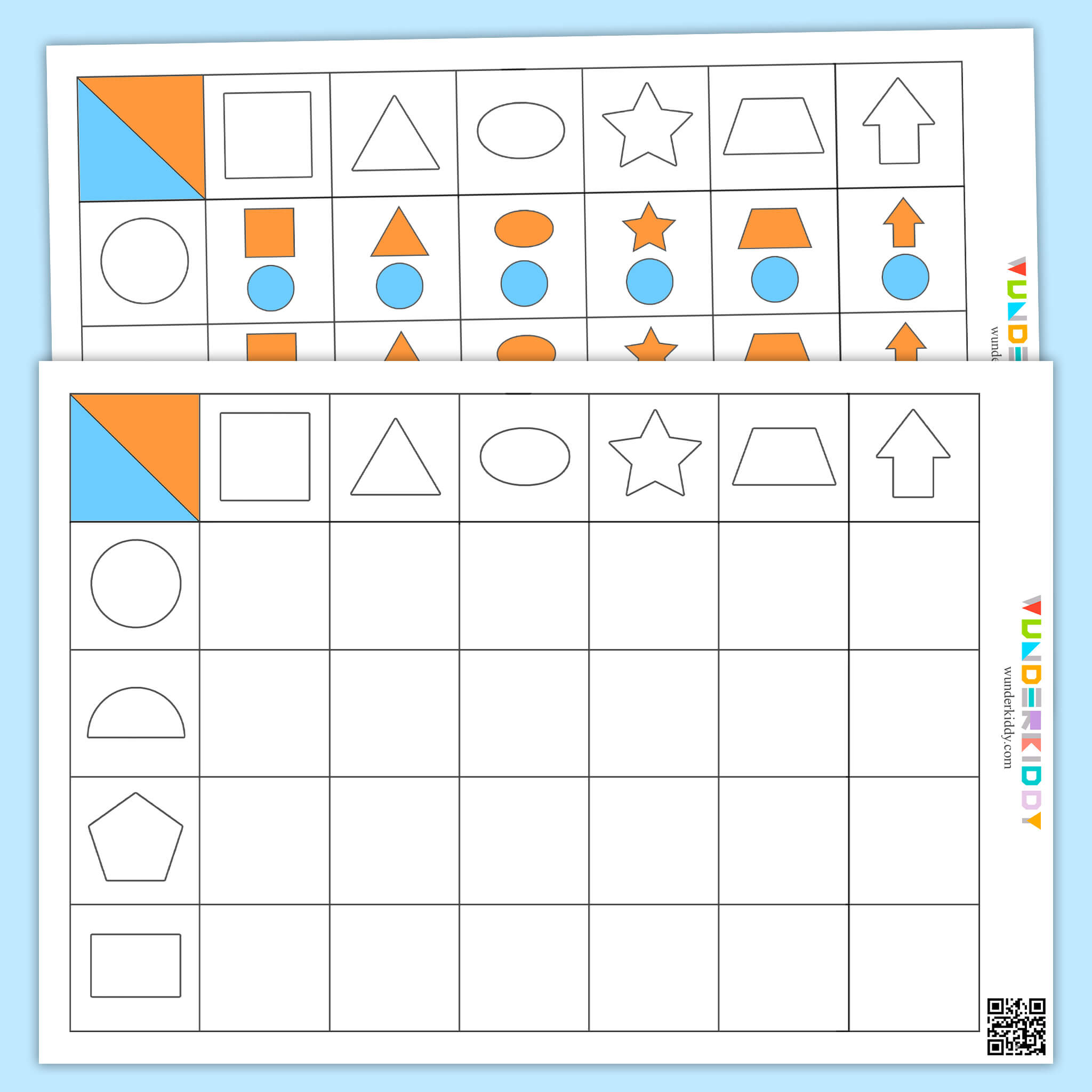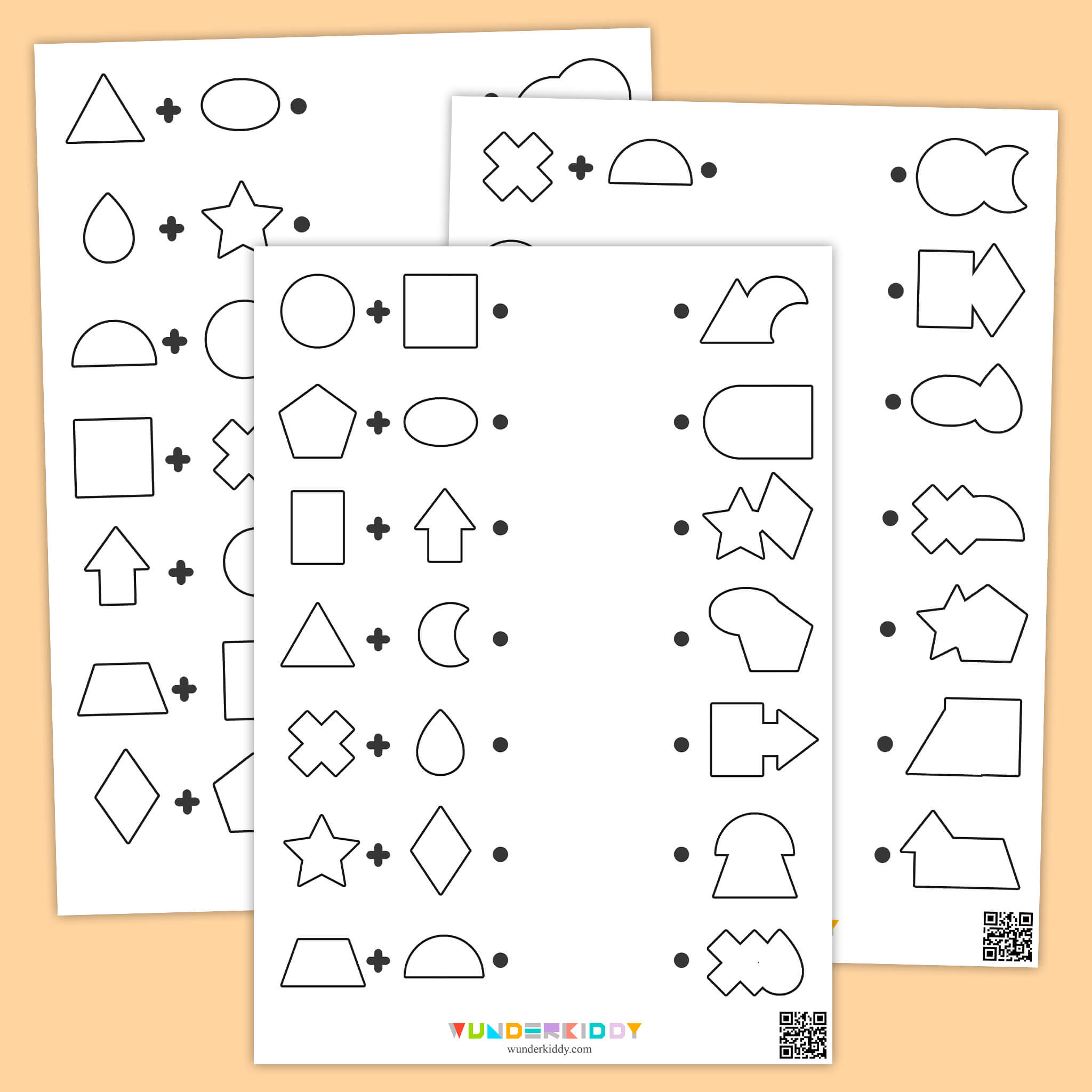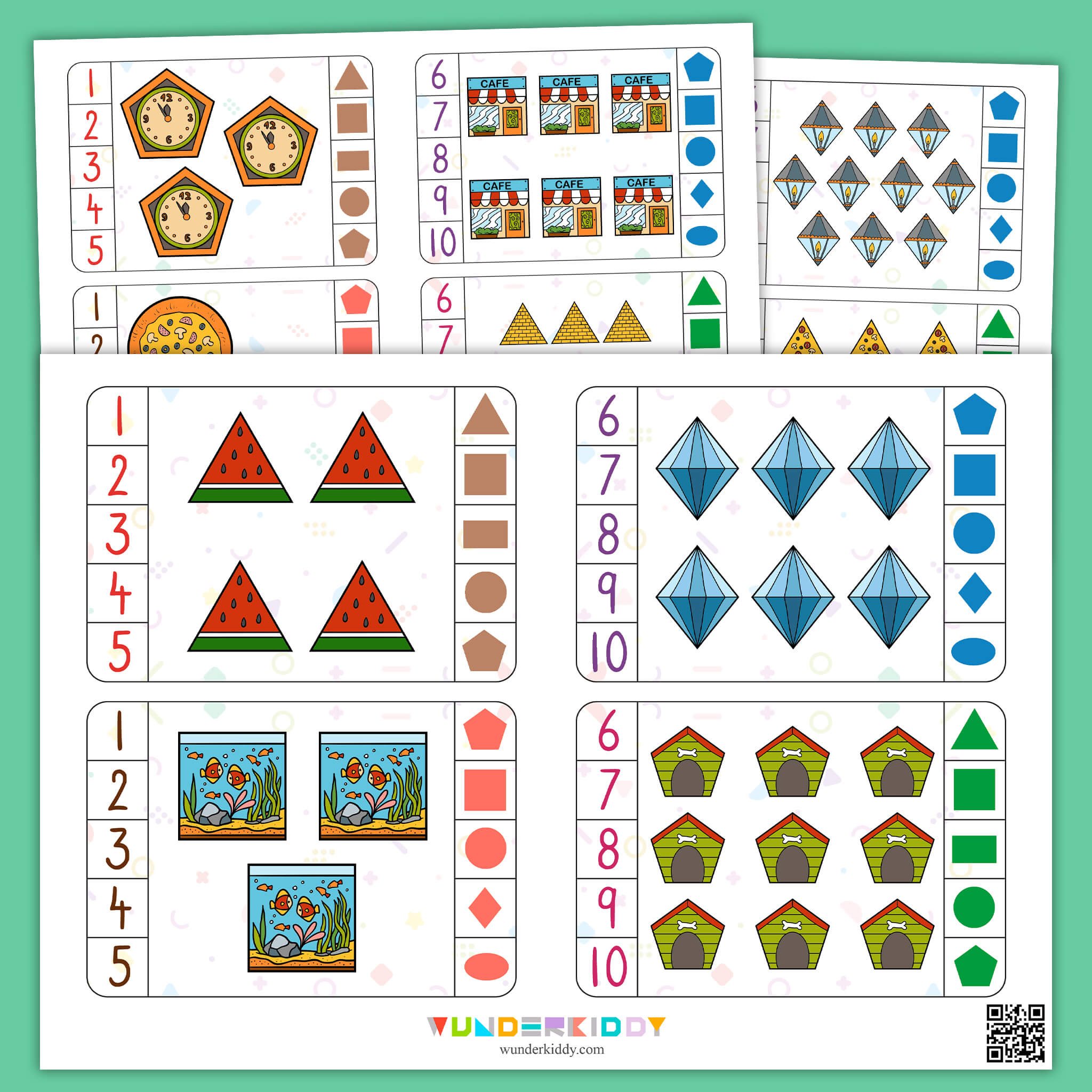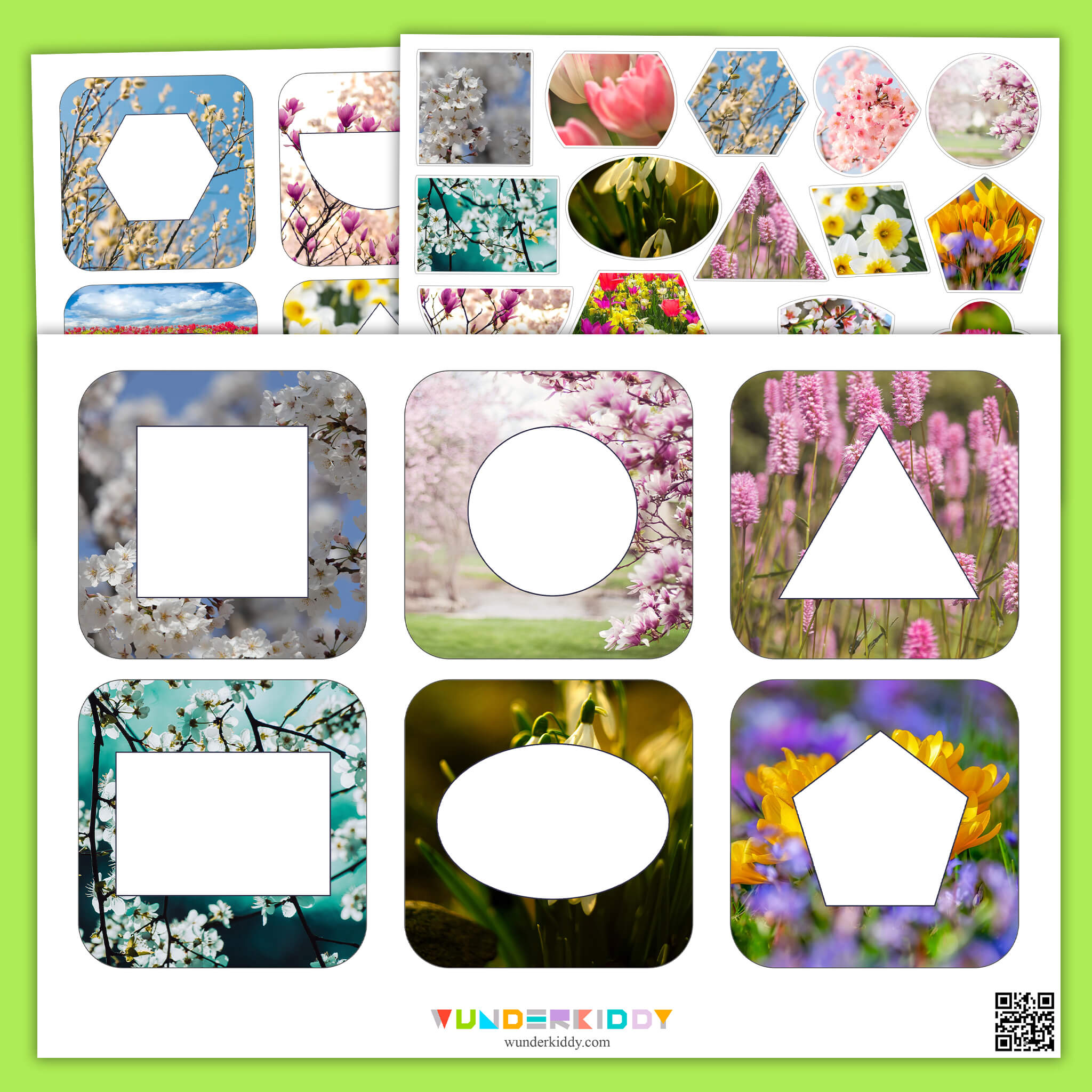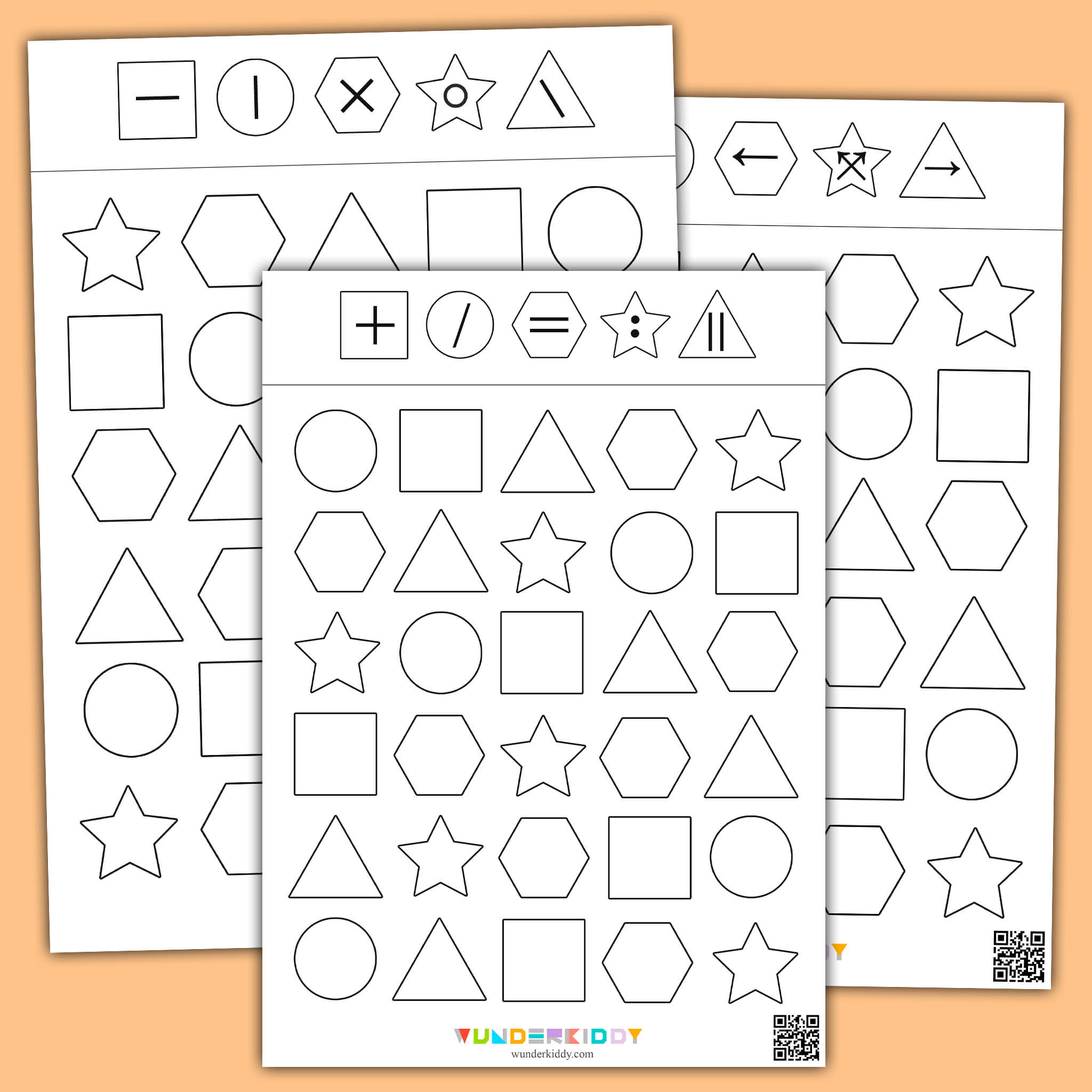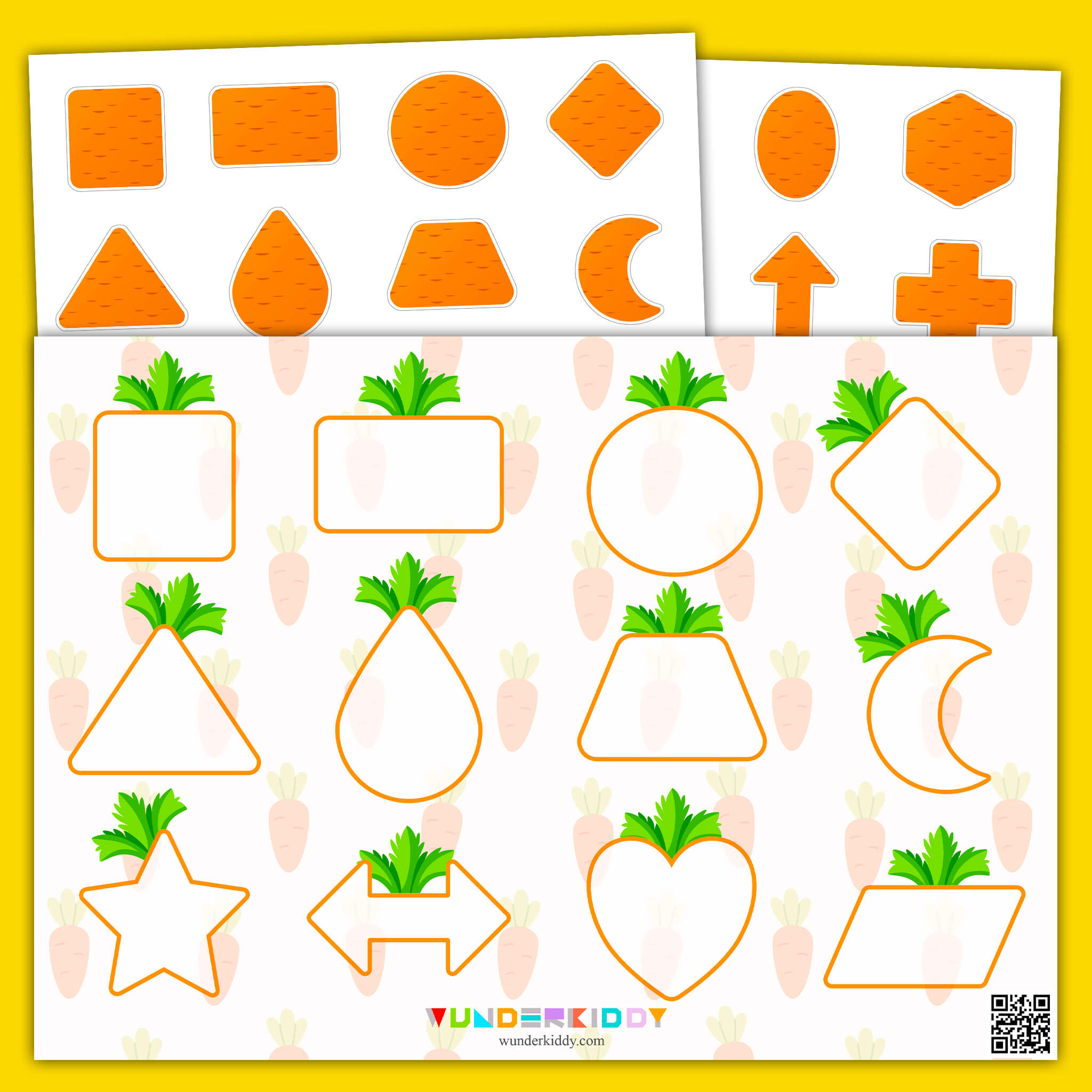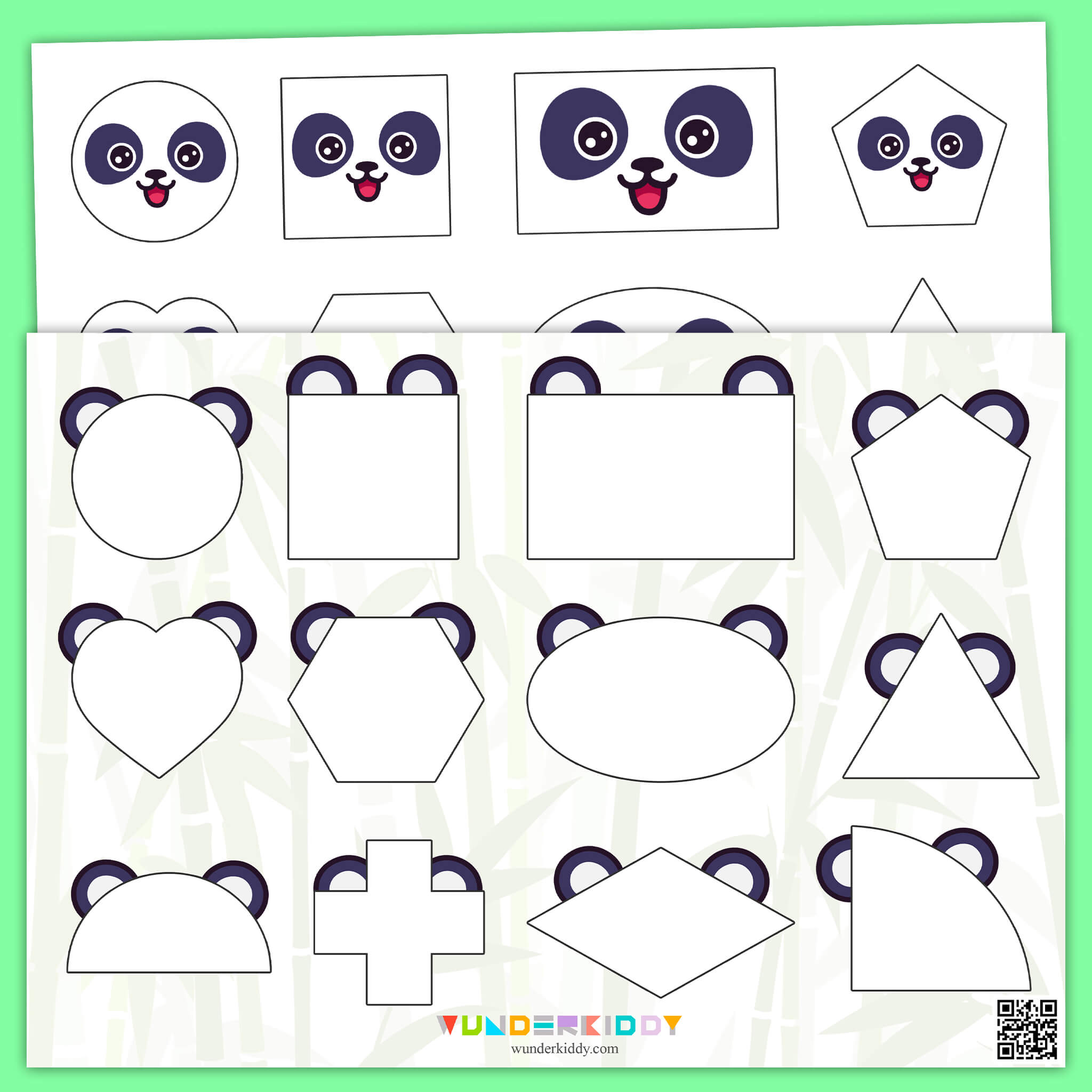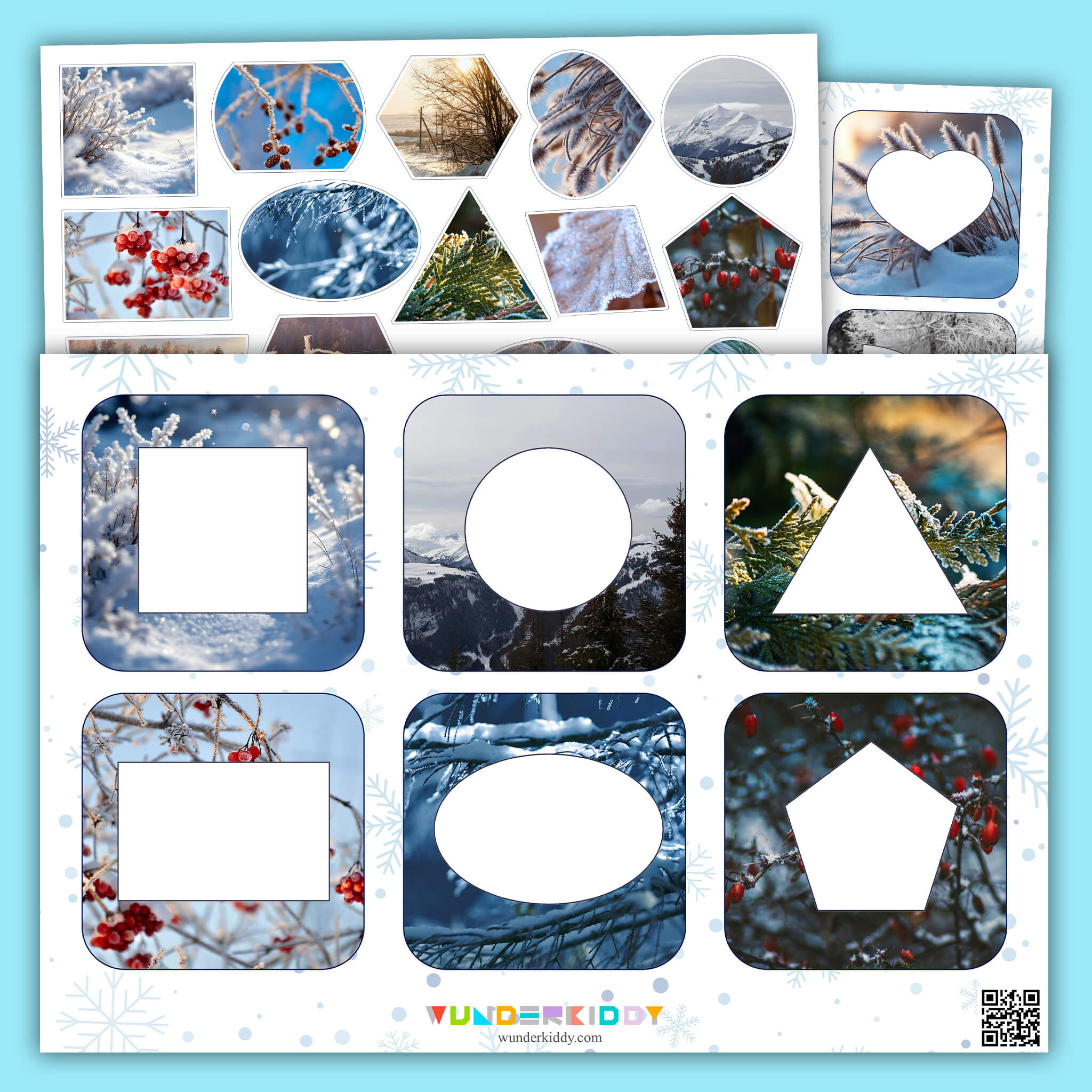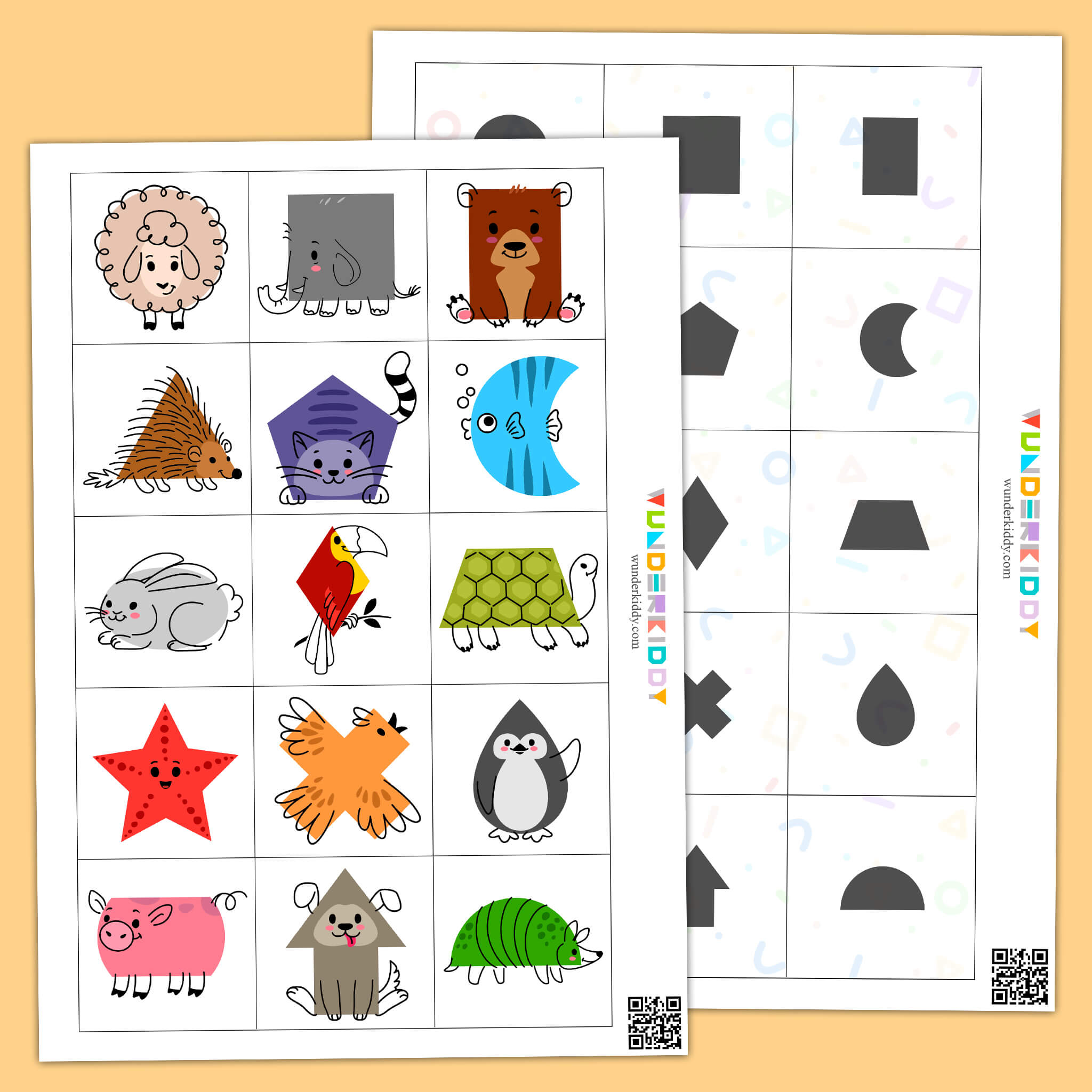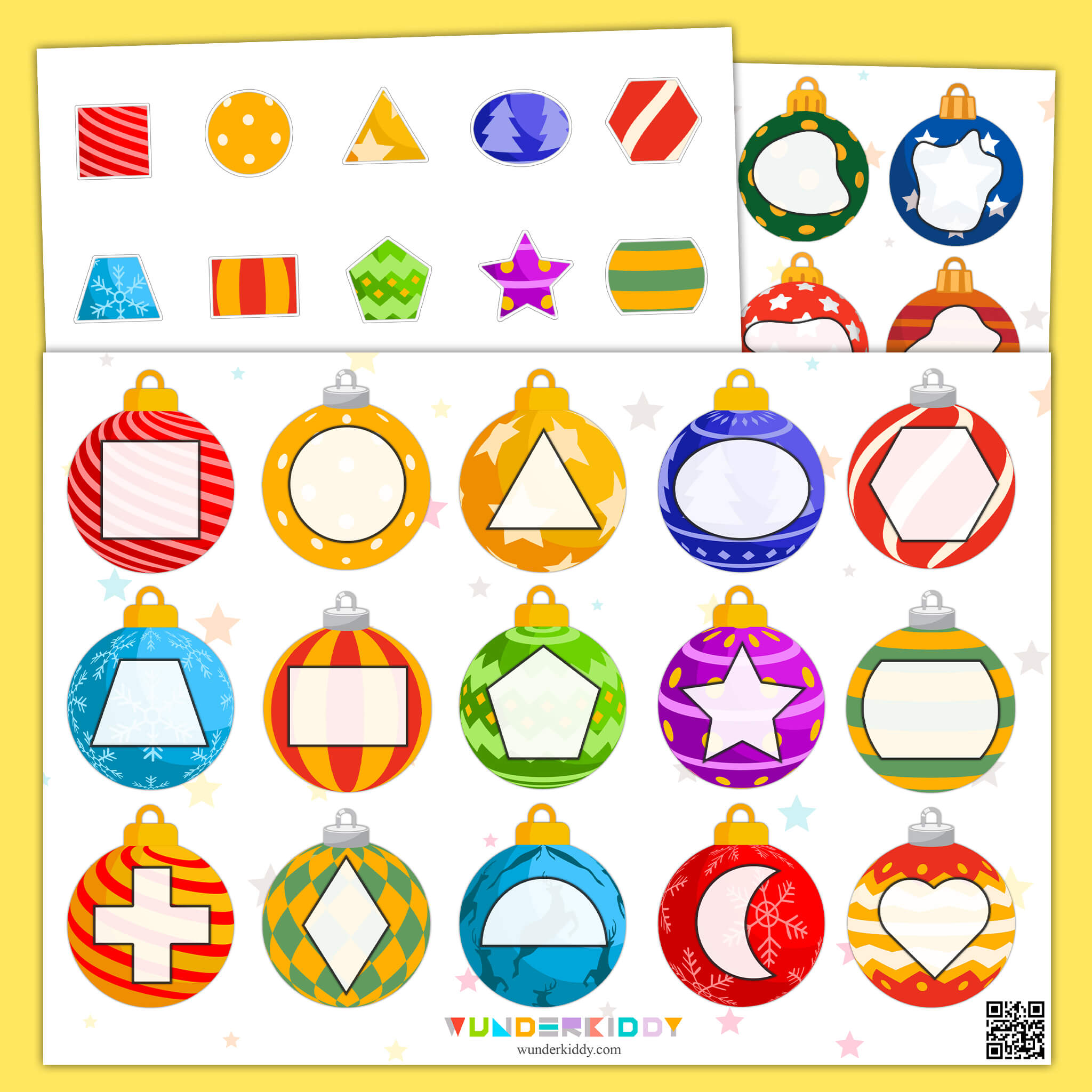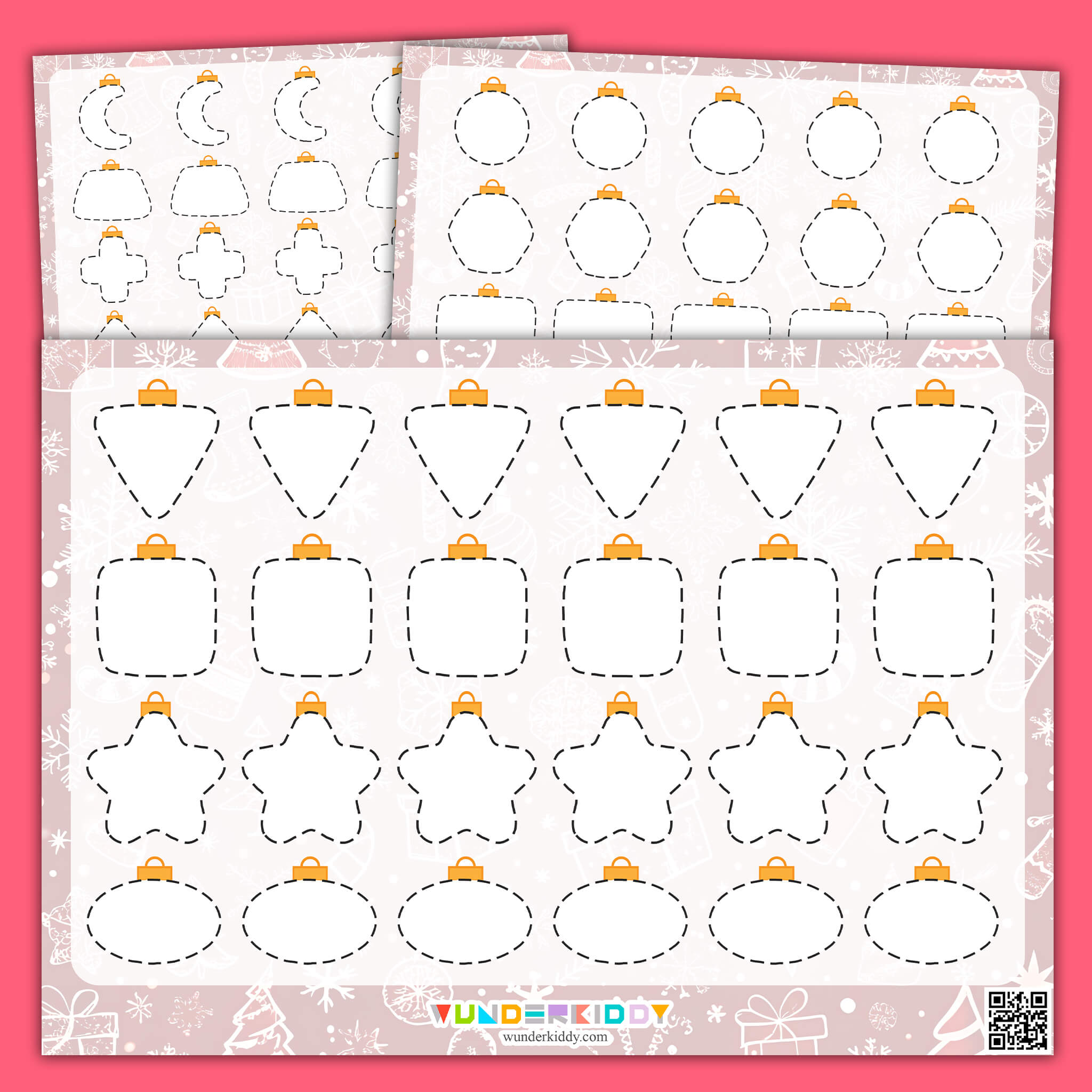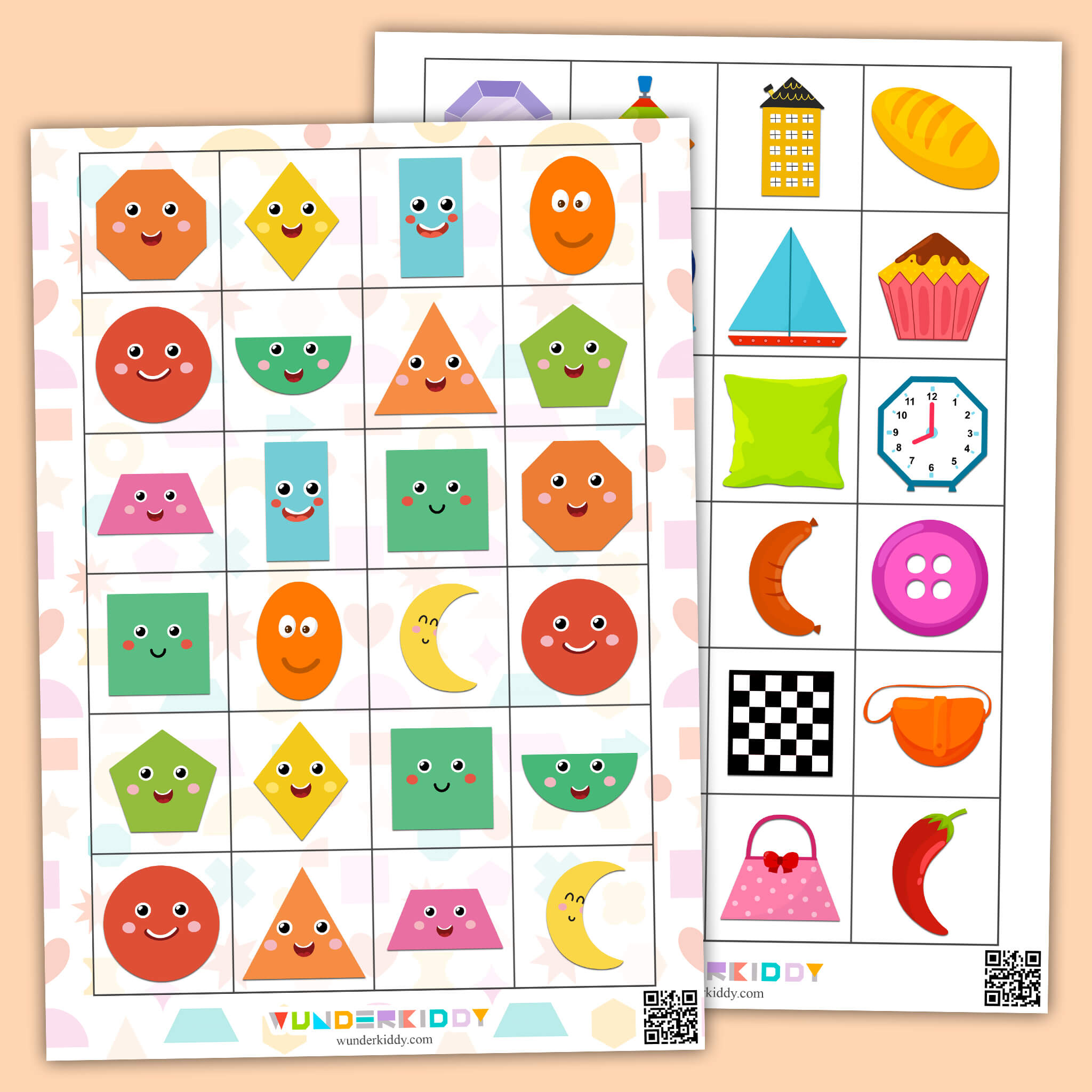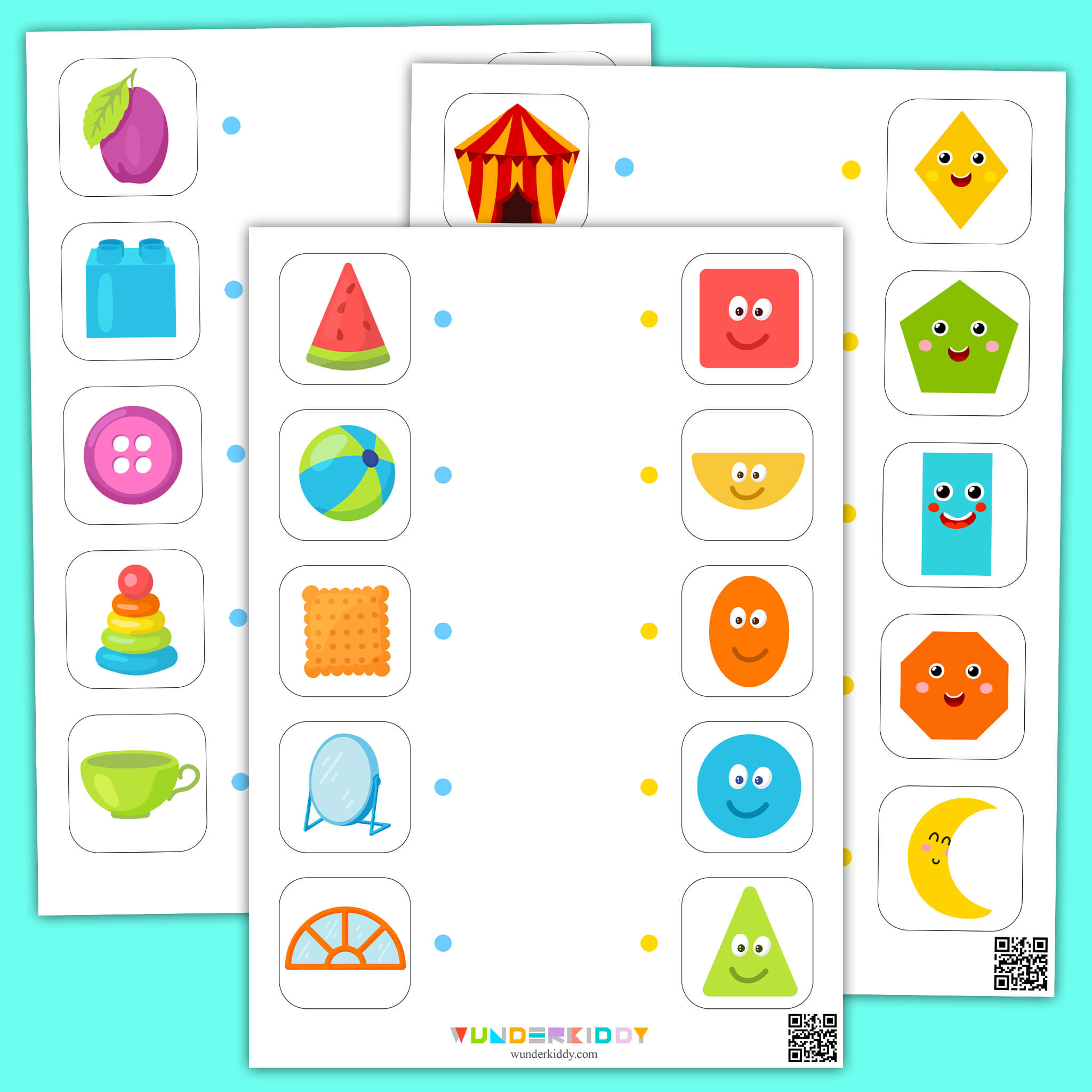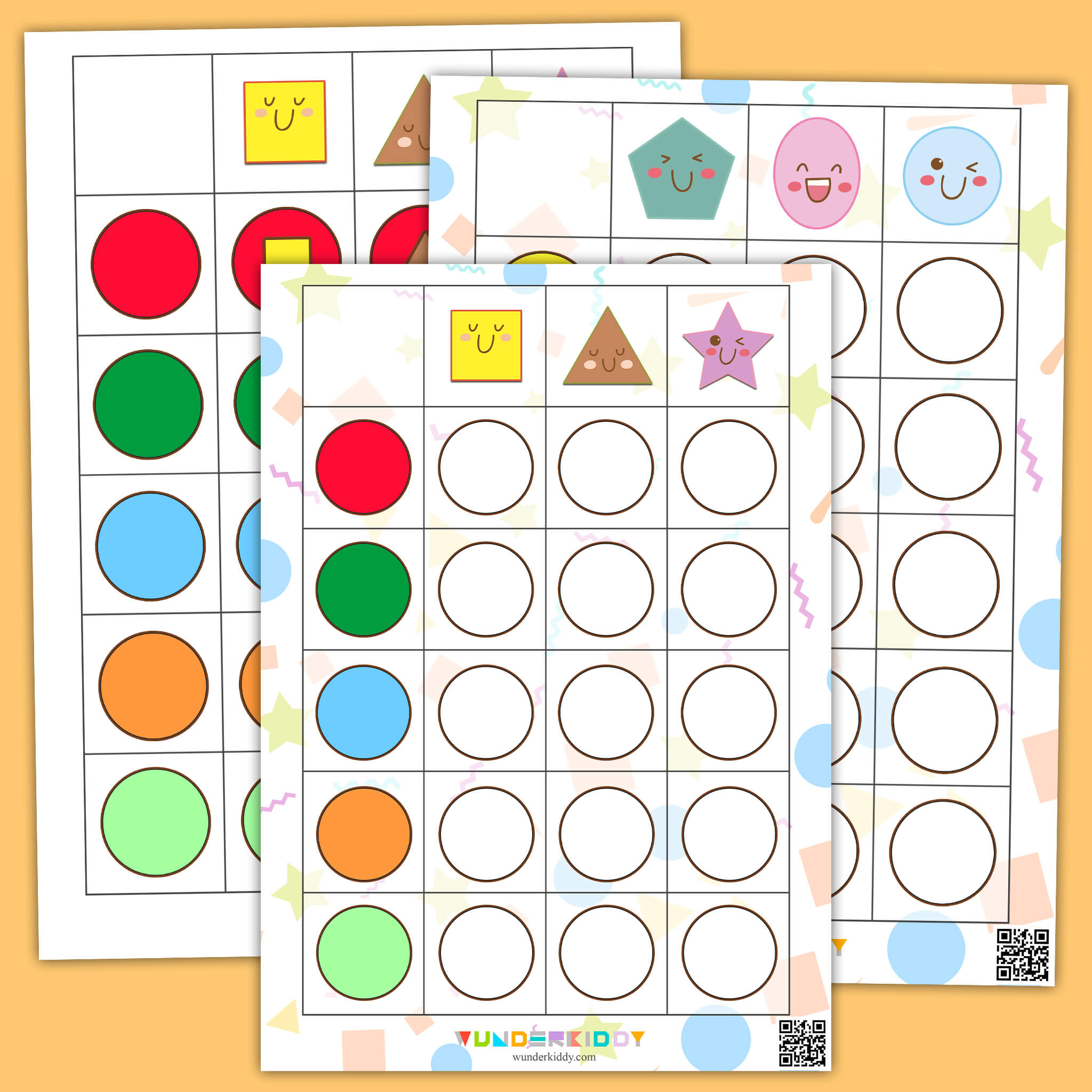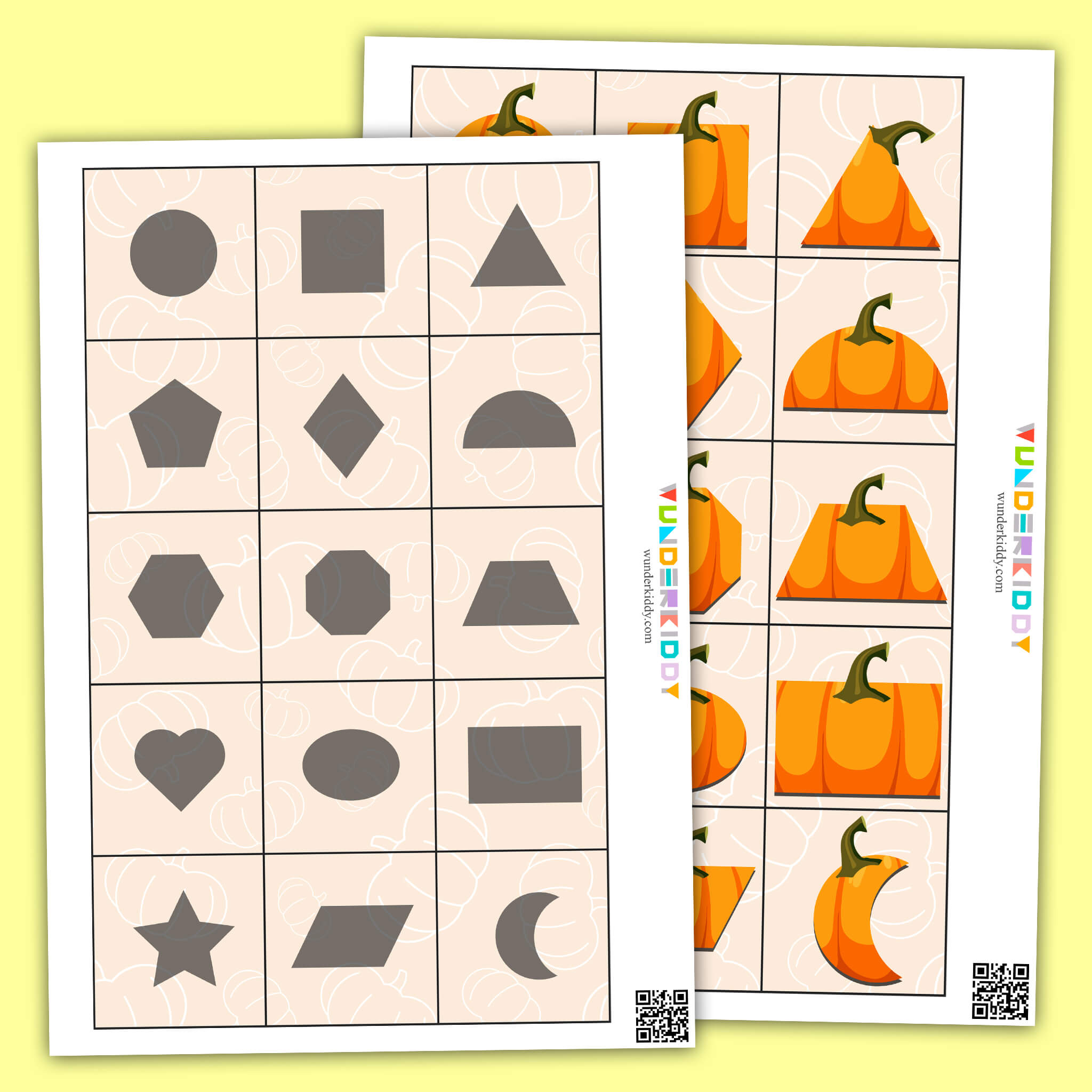Shape Activities for Kids
FilterAn important aspect of a child's development at preschool age is the formation of spatial thinking. Shapes recognition is useful for visual perception of the surrounding objects and development of logical thinking. Babies from an early age can learn to analyze, determine the properties of the objects and unite them by a common feature.
At what age a child can start learning shapes?
Each child develops at his or her own pace, so interest in learning shapes and forms can occur at different ages. We recommend starting shape activities for toddlers at the age of 1 year. Parents can help the baby to master the concepts of figures by using the names of figures and shapes in speech, using clarifying characteristics in conversation, for example, «round ball», «square box», «rectangular book», etc. After the age of 2, parents are recommended to playfully conduct home shapes activities for preschoolers. Printed learning games, shape worksheets, flashcards with figures, templates of figures to cut out and other developmental tasks will help kids in an easy playful form to master and consolidate knowledge about basic shapes.
Depending on their age and rate of development, children are able to perform more complex tasks, such as drawing, counting, or shapes recognition. Preschoolers over the age of 4 can associate flat images with three-dimensional shapes and vice versa. On our website, you can find and print games with geometric shapes for any age and preferences of your child.
Geometry for kids: the benefits of learning shapes at an early age
Preschool shapes activities contribute to the development of the child's spatial and associative thinking, as well as analytical skills. These skills are essential for further mastery of mathematics and the general development of the child. Already at an early age, children can identify the properties of the surrounding objects and classify them into groups depending on their shape.
In addition, basic shapes knowledge has a positive impact on children's creative abilities, as it is indirectly present in the child's everyday games - whether it is a craft from plasticine or a structure from a construction kit.
Shape activity ideas for learning geometric figures
The most fun way to learn geometric shapes with children is through shapes cards and associations. Print out educational shapes games and in the process of performing the task, make associations of shapes with the surrounding objects. You can also draw your child's attention to different objects around and name their shape:
- Sorting games for the youngest children, where you need to group the objects according to their shape or distribute the figures into the appropriate cells, are simple and effective.
- Molding from plasticine. You can learn shapes and figures with the help of modeling, because you can mold any figure out of plasticine according to the task. In addition, children can train their fine motor skills and creative thinking.
- Drawing, like modeling, is a great way to learn shapes and at the same time develop a child's graphomotor skills. On our website you can find different printable shape activities for kindergarten depending on the age and skills of the child.
- «Guess by touch» is a very fun and exciting activity on shapes for preschoolers in which children have to name the shape of an object with their eyes closed. Give your child any object, for example, a cube. The child needs to indicate the geometric shape without visual interaction with the object. If you don’t have 3d forms, you can make shape flashcards from paper. Just cut out different shapes from thick paper and play as written above.
- Educational cartoons for children from 2 years of age. Every kid likes cartoons, so parents can combine pleasure and learning. Without exceeding the recommended viewing time of 15 minutes a day, children can get acquainted with geometric figures together with their favorite cartoon characters.
- Sand games. Cut out different shapes from shape coloring pages and hide them in a container with sand. Then invite your child to find the cards and name the shapes. We recommend cutting out shapes from colored paper or coloring them, so that your child can also reinforce the knowledge of shapes and colors.
- Rope activities. Take a thick piece of a string or a small piece of brightly colored small rope and try to make a shape on a flat surface with your child, such as a triangle or a circle.
- «Find the Extra» or «Find the Shape» games. It is easy to make shapes worksheets for preschool also by yourself. On an empty sheet of paper draw many identical figures and one different figure. The child needs to look carefully at all the figures and find the extra one. You can also draw many different shapes and ask your child to find one of them, for example, a square or a circle.
There are many different ways to explore shapes with toddlers and preschoolers. Based on the child's preferences, parents can make learning shapes a fun and easy activity. The most important thing is to pay attention to any successes of the baby and praise him or her for their efforts, which will give motivation for further harmonious development.
